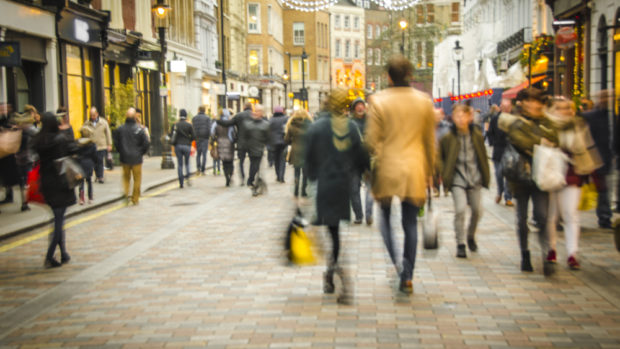As sustainability continues to dominate the buying decisions of Gen Z fashion shoppers, this demographic of younger consumers increasingly wants retailers to communicate the carbon impact of their purchases at each stage of their buying journey, the latest data from True Fit, an AI platform that decodes size and fit for apparel and footwear retailers, reveals.
Research of over 1,000 UK shoppers by True Fit showed that, as green retail demands become a key battleground for generating sales and driving loyalty amongst Gen Z shoppers, nearly one-third (31 per cent) of this demographic now want the sustainable credentials of a garment clearly stated on the label, while a quarter (25 per cent) said brands should show the CO2 ‘price’ for each item, alongside the actual cost of the piece of clothing, to help inform their buying decisions.
Almost two-thirds (62 per cent) of Gen Z shoppers felt retailers could help them shop more sustainably by not offering fast fashion altogether or moving towards offering slow fashion collections, featuring more sustainably manufactured garments that are made to last. And with the ethical fashion market tipped to reach US$10billion by 2026, 67 per cent of Gen Z would consider swapping fast- for slow- fashion in the future to be more environmentally-conscious in their buying choices.
With a recent British Fashion Council report warning that 23 million returned garments were sent to landfill or incinerated last year in the UK, generating 750,000 tonnes of CO₂ emissions, the impact of returns on consumers’ sustainability aspirations is also being called into question.
True Fit’s research showed that sustainably minded Gen Z shoppers would be motivated to return less if they were aware of the carbon ‘cost’ associated with their return, with over a fifth (21 per cent) agreeing that being made aware of the carbon emissions associated with an online fashion return would encourage them to send less back.
Jessica Arredondo Murphy, co-founder & COO at True Fit, commented: “Two important things we have all learned about returns in the last five years – they are not going to go away, and there is no single magic bullet that will solve them. That being said, it is worth starting with the imperatives for action. While once this was mostly about protecting profit margins, now we are talking about the very real need to address returns for the sake of a sustainable future for fashion in the context of its environmental footprint and the growth of eCommerce.”
Identifying returns as a key way to reduce unnecessary carbon emissions, a third of Gen Z shoppers (33 per cent) said they want retailers to make it easier for them to return less so their carbon footprint would be smaller, while two-thirds (65 per cent) said improved sizing information or personalised fit recommendations would help them choose the best fitting item, ensuring they returned less in the first place.
“Looking more deeply into who returns and why provides retailers and brands with the ammunition they need for change – and with size and fit remaining the top drivers for fashion returns and size sampling behaviours, building guidance into the buying journey is a critical step to reducing unnecessary returns while improving the shopper experience,” Murphy concluded.








Share